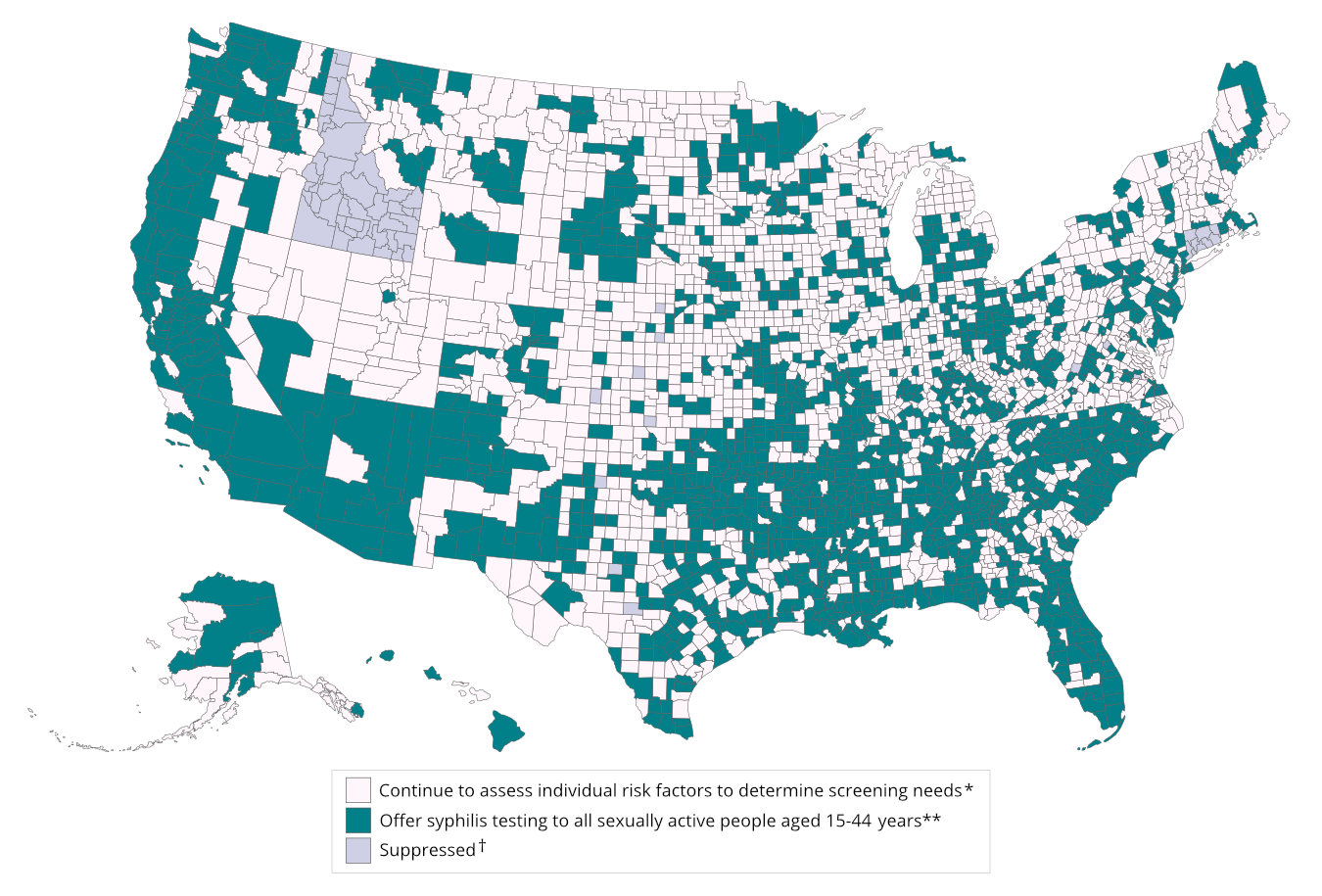County-level Syphilis Rates Can Help Direct Syphilis Screening Efforts
Increased screening is needed as syphilis rates rise. Healthcare providers can use primary & secondary syphilis rates in their counties to better direct their syphilis screening efforts.
CDC recommends screening all pregnant people at least once during their pregnancy and taking an individual, risk-based approach to syphilis screening for others. For many sexually active people, the most significant risk factor for syphilis is living in a county with high rates of syphilis. However, the threshold for high rates of syphilis is not currently defined.
The Healthy People 2030 goal for reducing the rate of primary and secondary syphilis among women aged 15–44 years is 4.6 per 100,000 people. This goal can provide a threshold for geography-based syphilis screening efforts for all sexually active people.
The county-level map below shows counties above and below this rate and can be an important tool for providers as they consider their syphilis screening efforts.
Considering geographic risk can help reduce stigma and bias in syphilis screening. This improves access to syphilis testing and treatment for everyone. Identifying and preventing syphilis before pregnancy can also help prevent congenital syphilis.
County-level syphilis rates among women can help direct syphilis screening efforts.

* In counties with a rate of primary & secondary syphilis among women aged 15-44 years less than or equal to 4.6 per 100,000 people, providers should continue to assess individual risk factors to determine screening needs, as outlined in existing screening guidelines.
** Offer syphilis testing to all sexually active people aged 15-44 years in counties with a rate of primary & secondary syphilis among women aged 15-44 years that is greater than 4.6 per 100,000 people.
† In 2022, Connecticut adopted nine planning regions as county-equivalent geographic units; as syphilis case notification data were not available in the new county-equivalent units for 2022, data for Connecticut have been suppressed for this figure. Per current re-release guidelines for county-level syphilis case notification data, data have been suppressed for all counties in Idaho and for counties in other states where display could identify the age, race, and sex of cases in strata with a population of <100 people.
DATA TABLE: Rates of primary & secondary syphilis among women aged 15–44 years by county, 2022
* In counties with a rate of primary & secondary syphilis among women aged 15–44 years at or below 4.6 per 100,000 people, providers should continue to assess individual risk factors to determine screening needs, as outlined in existing screening guidelines. Offer syphilis testing to all sexually active people aged 15–44 years in counties with a rate of primary & secondary syphilis among women aged 15–44 years that is greater than 4.6 per 100,000 people.
ND: Not displayed. In 2022, Connecticut adopted nine planning regions as county-equivalent geographic units; as syphilis case notification data were not available in the new county-equivalent units for 2022, data for Connecticut have been suppressed in this table. Per current re-release guidelines for county-level syphilis case notification data, data have been suppressed for all counties in Idaho and for counties in other states where display could identify the age, race, and sex of cases in strata with a population of <100 people.